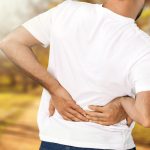
Tired of taking the same old cardio class? It’s time to explore some of the combination classes being offered at both large gyms and small, more personalized fitness centers. One of the most popular options is the multi-discipline class — two or more activities woven into the same workout session, designed to keep fitness fun as well as challenge participants and avoid workout ruts. And there are many variations. A very rigorous combination takes the high-calorie burning technique of high-intensity interval training and applies it to strength training moves using only your body weight. By focusing on exercises like lunges and squats and not worrying about grabbing equipment, you can work through the moves quickly. Some creative combo classes mix various forms of dance, so you get a cardio workout as you learn different styles — that’s a great twist if you love Zumba, for instance, but want to shake it up even further. Adding an ab workout to a cardio class is another common offering. As different as they are, most of these mash-ups are designed to burn maximum calories, build lean muscle and increase stamina while keeping you engaged. Clever fitness teachers in your area might offer their own combinations, but some global pioneers have drawn from dynamic activities to make innovative combinations, like mixing Pilates with boxing and dance, and weight-training with… read on >




























-300x200.jpg)







-300x169.jpg)
